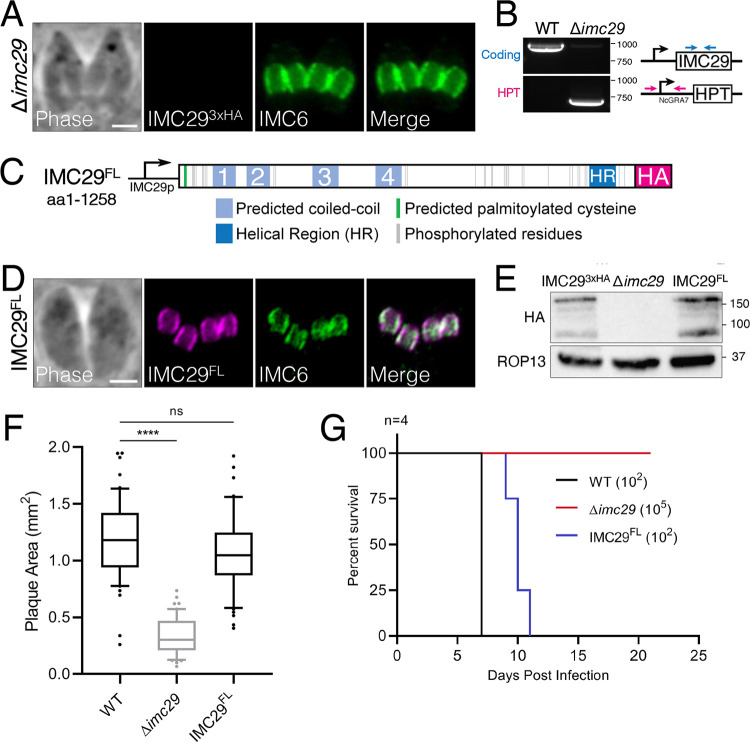FIG 2.
IMC29 is important for parasite fitness in vitro and in vivo. (A) IFA of Δimc29 parasites shows the absence of endogenous IMC29. Magenta, mouse anti-HA; green, rabbit anti-IMC6. (B) PCR verification for genomic DNA of WT (RHΔhxgprt) and Δimc29 parasites. Diagram illustrates primers used to amplify the IMC29 coding sequence (blue arrows) and the site of recombination for the knockout locus (magenta arrows). (C) Diagram of full-length IMC29 (1,258 amino acids) driven by the endogenous promoter (denoted as IMC29FL), highlighting the predicted N-terminal palmitoylated cysteine at position 19, 32 phosphorylation sites, 4 predicted coiled-coil (CC) domains, a helical region (HR), and a 3xHA C-terminal epitope tag. (D) IFA of IMC29FL-complemented parasites shows restoration of daughter bud IMC localization. Magenta, mouse anti-HA; green, rabbit anti-IMC6. (E) Western blot of whole-cell lysates of IMC293xHA, Δimc29, and IMC29FL parasites showing the absence of endogenous IMC29 and restored levels of complemented IMC29FL. IMC29 was detected with mouse anti-HA; ROP13 was used as a loading control and detected with mouse anti-ROP13. (F) Quantification of plaque assays depicts the severe growth defect of Δimc29 parasites, which is completely rescued by the full-length complementation construct. Significance was determined using multiple two-tailed t tests. ****, P < 0.0001; ns, not significant (P = 0.1957). (G) Mouse virulence assay illustrates the sharp decrease in virulence of Δimc29 parasites (red) compared to wild-type parasites (black) and IMC29FL parasites (blue). All scale bars are 2 μm.

